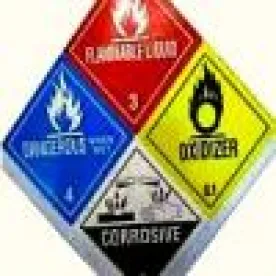The Occupational Safety and Health Administration has backed up its pledge, made in November, not to cite manufacturers or importers, including product formulators, if they are unable to develop hazard communication program materials for chemical mixtures in compliance with the agency’s revised Hazard Communication Standard (HCS) by the June 1, 2015, deadline.
In a February 24 enforcement memorandum to stakeholders, OSHA said it would let the deadline slide, but only if noncompliant manufacturers or importers could demonstrate “reasonable diligence” and “good-faith efforts” in trying to obtain the required information on mixtures from their raw-material suppliers.
In 2012, OSHA finalized revisions to its HCS to bring it into compliance with a global system aimed at harmonizing information on hazardous substances. The June 1 deadline applies to Safety Data Sheets (SDSs) and hazard labels. Distributors were given until December 1, 2015, to comply; the enforcement memorandum also gives them a compliance break, but, here, too, they must demonstrate reasonable efforts have been made to obtain the necessary information.
In contrast, beginning June 2, 2015, upstream raw-material suppliers will be deemed non-compliant if they do not have an HCS-compliant SDS or label available for downstream manufacturers or product formulators of mixtures. These suppliers must provide compliant SDSs to downstream manufacturers or importers with the first shipment, upon request prior to the first shipment, and after an SDS is updated.
“If the Agency is made aware of a manufacturer or importer requesting but not receiving a revised SDS from an upstream raw material supplier, the matter shall be referred for further enforcement action to the appropriate Area Office with jurisdiction over the employer,” memorandum said.
According to Bloomberg BNA, stakeholders hailed the enforcement guidance because it provides certainty about OSHA’s enforcement intentions, including explicit deadlines for compliance once manufacturers and importers have received the necessary information. The guidance will remain effective until February 2017.
The memorandum spelled out five factors for inspectors to consider when judging a company's efforts to comply with the HCS when the company lacks the information needed to develop communication materials. These are whether the company, in a timely manner:
developed and documented the process for gathering the necessary information from its upstream suppliers;
developed and documented efforts to obtain hazard information from alternative sources;
provided a written account of continued dialogue with its upstream suppliers;
provided a written account of continued dialogue with its distributors, including dated copies of all relevant written communication with its distributors informing them why it has been unable to comply with the standard; and
developed the course of action it will follow to make the necessary changes to SDSs and labels.
According to the memorandum, once the information is obtained, manufacturers and importers have six months to develop SDSs and labels that comply with the HCS or face one or more citations. Once the manufacturer or importer has developed a compliant SDS, the SDS must be provided to downstream users with the first shipment after the SDS was created, or earlier upon request.
Regarding distributors, the revised HCS permits them to continue to ship chemicals compliant with labelling requirements under the old HCS until December 1, 2015. However, if a distributor is unable to meet its compliance deadline, OSHA said it would consider whether that distributor exercised reasonable diligence and good faith at compliance by evaluating the distributor’s documentation of its HCS communication with the manufacturer or importer.
Distributors also must provide compliant SDSs to downstream users with the first shipment after the SDSs are provided by the manufacturer or importer or prior to the first shipment upon request. The good-faith exception for distributors is available until December 1, 2017.





 />i
/>i

